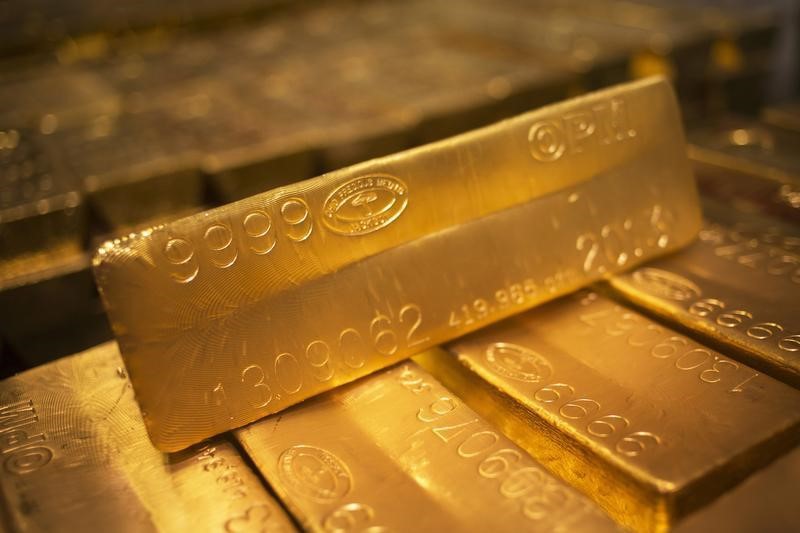Investing.com-- Gold prices retreated in Asian trade on Monday, consolidating some recent gains as traders turned more biased towards the dollar ahead of key U.S. inflation data due later in the week.
The yellow metal saw some strength last week as some signs of a cooling U.S. economy sparked speculation over eventual interest rate cuts by the Federal Reserve in 2024.
But gold still remained well below record highs hit in April, and is expected to trade rangebound ahead of this week’s inflation data.
Spot gold fell 0.1% to $2,357.35 an ounce, while gold futures expiring in June fell 0.5% to $2,363.65 an ounce by 23:55 ET (03:55 GMT).
Gold, metal markets on edge ahead of inflation data
Gold and broader metal markets were on edge ahead of key U.S. inflation readings due this week.
Producer price index data for April is due on Tuesday, while the more closely-watched consumer price index data is due on Wednesday.
Any signs of sticky inflation are likely to further diminish expectations of U.S. interest rate cuts this year, boosting the dollar and pressuring metal prices.
The greenback steadied after recent volatility. Data on Friday showed U.S. consumer confidence weakened substantially in May, but that inflation projections remained high for the coming year.
Broader precious metal prices were also under pressure ahead of this week’s inflation readings, given that higher-for-longer rates increase the opportunity cost of investing in metal markets.
Platinum futures steadied at $1,005.05 an ounce, while silver futures sank 0.8% to $28.288 an ounce.
Copper prices edge higher amid mixed China cues
Among industrial metals, copper prices advanced on Monday, remaining close to two-year highs amid some optimism over tighter markets. But further gains were stalled by mixed cues from top importer China.
Three-month copper futures on the London Metal Exchange rose 0.3% to $10,080.50 a ton, while one-month copper futures rose 0.2% to $4.6630 a pound.
Chinese inflation data, released over the weekend, showed a pick-up in CPI inflation. But PPI inflation, which is a key indicator of local factory and business activity, shrank for a 19th consecutive month.
But the mixed inflation readings were offset by Beijing loosening more restrictions on the beleaguered property sector, which could potentially support copper demand in the coming months.
